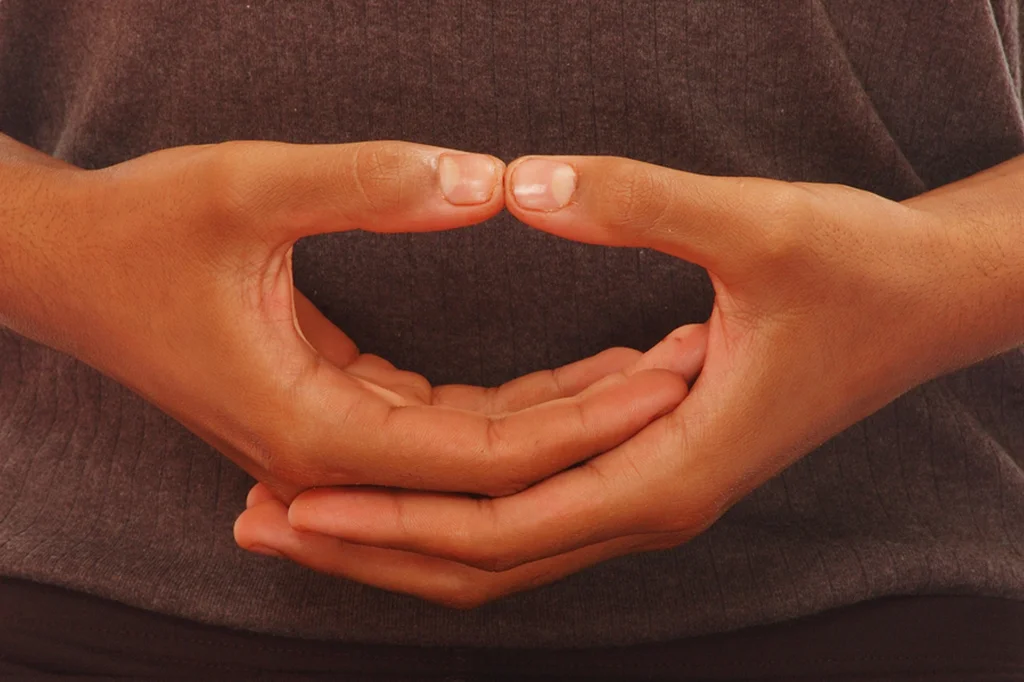Dhyana Mudra - The Yoga Mudra Pose for Deep Meditation and Inner Peace
The art of meditative practices holds a distinctive stature in numerous religious and spiritual customs worldwide, a chief component of which is Dhyana Mudra. Synonymous with peace, contemplation and profound meditation, the Dhyana Mudra symbolises an undiluted spiritual journey.
This extraordinary spiritual hand gesture predominantly practised in the Buddhist tradition, ‘Dhyana Mudra,’ provides an extensive depth of serenity, balancing one’s physical being and consciousness with their spiritual endeavours. The term ‘Dhyana’ comes from the Sanskrit language, which directly translates to ‘deep meditation.’ ‘Mudra’, on the other hand, is referred to as ‘a symbolic hand gesture.’
How to Practice Dhyana Mudra
The practice involves joining both hands with upturned palms resting on one’s lap, symbolising a vessel of receptivity. In some depictions, the Buddha or other revered figures hold an alms bowl in this gesture, signifying sustenance, both physical and spiritual. With this distinctive posture, one harmoniously communes with their inner world while emanating a sense of openness to the Universe.
So, how exactly does Dhyana Mudra impact the practitioner? When adopted in meditation, the Dhyana Mudra steers the mind into a tranquil state of emptiness, drawing it away from worldly distractions and diversions. By creating a metaphorical circle of perpetual energy flow between the hands, the Dhyana Mudra builds an environment of calm, heightening awareness and facilitating focus.
Variations of Dhyana Mudra
Unbeknownst to many, there are multiple variations of this mudra. Some are marked by a single hand resting gently over the other, fingers extended towards the body. Other variants depict one hand overlaid on the other, with fingers intertwined or flexed, offering myriad means of approaching this introspective practice. Despite the slight physical variations, the fundamental philosophy remains unchanged: enlightenment through deep meditative silence.
Cultural and Spiritual Relevance

Importantly, while primarily rooted in Buddhism, Dhyana Mudra also pervades other cultures and religious beliefs. It echoes a universal sentiment of serenity, focus and connection to one’s spiritual dimension. Regardless of personal religious convictions, embracing the Dhyana Mudra encourages practitioners to cultivate internal harmony and cognitive clarity.
Remember, adopting this mudra doesn’t instantly yield nirvana. However, as you foster consistency, commitment and consciousness, the serene depths of the Dhyana Mudra start unravelling, gently escorting you along the path of internal tranquillity and spiritual enlightenment.
As an exploration of the unspoken, subtle realm of existence, the practice of Dhyana Mudra extends an invitation to delve within oneself, nourishing inner silence, encouraging clarity and promoting profound connection. Now, are you ready to journey into the peaceful embrace of the Dhyana Mudra? The pathway to enlightenment beckons.
